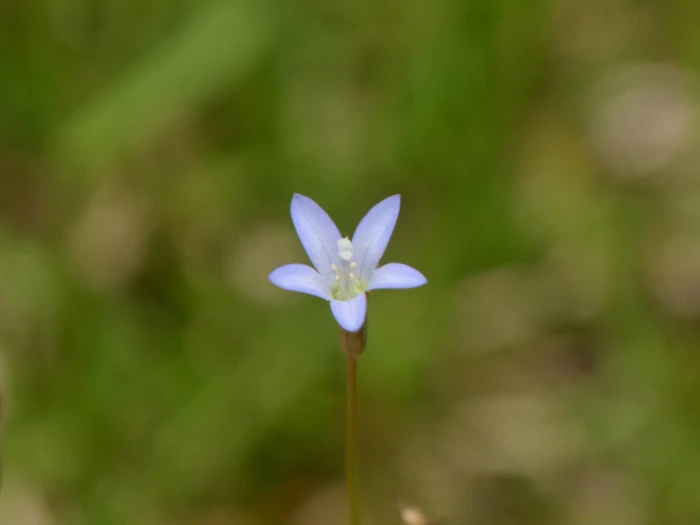Tuffybells
(Wahlenbergia linarioides)
Tuffybells (Wahlenbergia linarioides)
/
/

vinicius_s_domingues
CC BY 4.0
Image By:
vinicius_s_domingues
Recorded By:
Copyright:
CC BY 4.0
Copyright Notice:
Photo by: vinicius_s_domingues | License Type: CC BY 4.0 | License URL: http://creativecommons.org/licenses/by/4.0/ | Rights Holder: vinicius_s_domingues | Publisher: iNaturalist | Date Created: 2023-12-03T12:00:40-08:00 |

























Estimated Native Range
Climate Requirements
| • Precipitation | 38" - 45" |
| • High Temp. | 75°F - 90°F |
| • Low Temp. | 35°F - 52°F |
Summary
Wahlenbergia linarioides, commonly known as Tuffybells, is a perennial herb native to a variety of habitats across South America, including open woodlands, grasslands, and open forests. It typically grows at a moderate rate to a height of 1-2 feet (0.3-0.6 meters) and a width of 1-1.5 feet (0.3-0.5 meters). This plant is characterized by its slender, upright form and its delicate, tubular blue flowers that bloom profusely in the spring and summer, adding a splash of color to the garden. The flowers are particularly attractive to pollinators such as bees.
Australian Bluebell is valued for its low maintenance requirements and its ability to attract wildlife. It is often used in cottage gardens, rockeries, and as a border plant. It thrives in full sun to part shade and prefers well-drained soils, including clay, loam, or sandy types. While it requires medium amounts of water, it is somewhat drought-tolerant once established. Gardeners should be aware that although it is not prone to serious diseases or pests, it can be sensitive to overwatering, which may lead to root rot.CC BY-SA 4.0
Australian Bluebell is valued for its low maintenance requirements and its ability to attract wildlife. It is often used in cottage gardens, rockeries, and as a border plant. It thrives in full sun to part shade and prefers well-drained soils, including clay, loam, or sandy types. While it requires medium amounts of water, it is somewhat drought-tolerant once established. Gardeners should be aware that although it is not prone to serious diseases or pests, it can be sensitive to overwatering, which may lead to root rot.CC BY-SA 4.0
Plant Description
- Plant Type:
- Height: 1-2 feet
- Width: 1-1.5 feet
- Growth Rate: Moderate
- Flower Color: Blue
- Flowering Season: Spring, Summer
- Leaf Retention: Deciduous
Growth Requirements
- Sun: Full Sun, Part Shade
- Water: Medium
- Drainage: Fast, Medium
Common Uses
Border Plant, Butterfly Garden, Low Maintenance, Rock Garden
Natural Habitat
Native to open woodlands, grasslands, and open forests across South America
Other Names
Common Names: Native Bluebell
Scientific Names: Wahlenbergia linarioides , Breweria linifolia , Campanopsis linarioides , Campanopsis linarioides var. longifolia , Campanula arida , Campanula chilensis , Campanula filiformis , Campanula linarioides , Campanula linoides , Campanula linoides
GBIF Accepted Name: Wahlenbergia linarioides